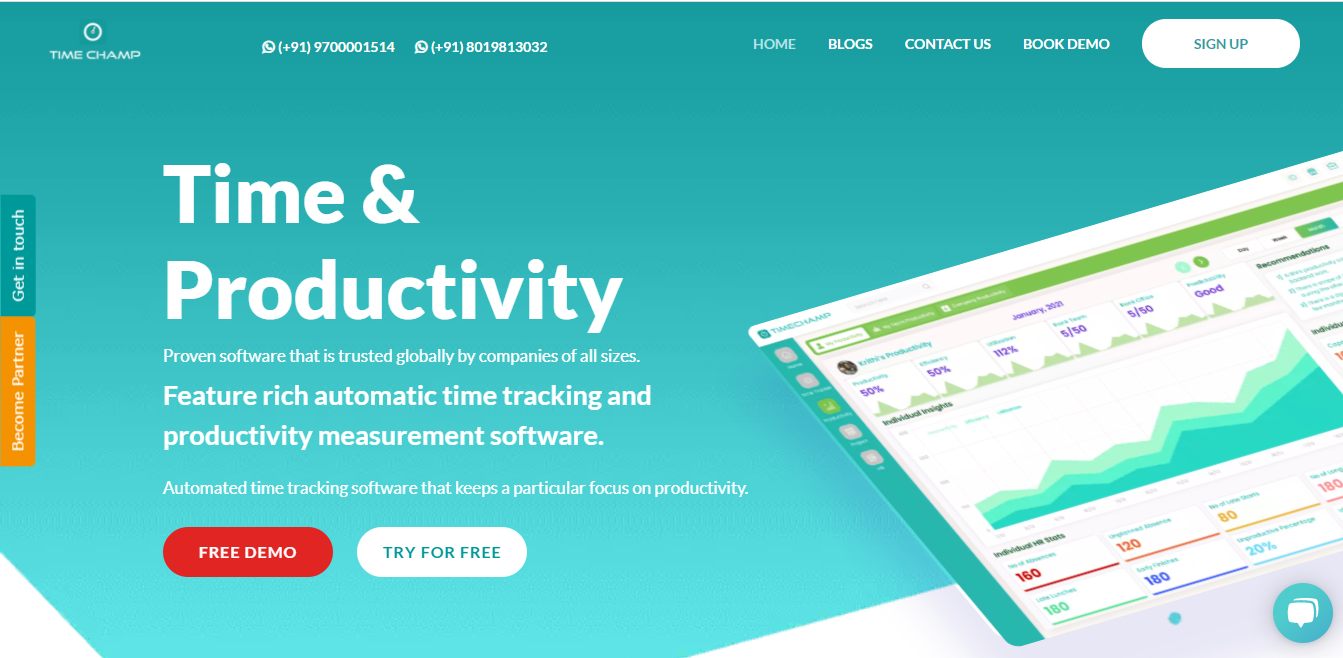
The novel coronavirus has accelerated a trend toward remote work that was already years in the making. Before the pandemic, many employees worked off-site at least once or twice a month.
Now that number is rising, and PwC estimates that 72% of workers would like to continue working remotely even after the pandemic moderates.
Will remote employees be less productive than their office-based counterparts?
According to a recent study by CareerBuilder, nearly half of employers who offer work from home opportunities say they have experienced decreased productivity as a result.
On the different, many organizations would be pleased to know that with the right strategies in place, they can both monitor employee productivity and provide their employees with insight to balance work and life.
Allowing an employee to work from home decreases the money spent to “house” an employee in the organization’s physical office. Charges such as office supplies, a workstation, software, and even heating/cooling costs are all dismissed.
Employers initially have to connect with remote workers more frequently, which is great as that feeling of engagement will increase productivity. Employees who feel more connected with the organization are more motivated and do work productively.
Employee monitoring is a tool that can be used to monitor and ensure employee productivity. So, how can organizations conduct employee monitoring to determine productivity?
With the use of employee monitoring software, employers can find the productivity metrics of employees – all entirely customizable and unique to the needs of the given organization.
One employer may desire to have their employees know that they are being monitored and another may prefer the software to work in stealth mode.
One employer may desire to have their employees know that they are being monitored and another may prefer the software to work in stealth mode.
Employers choose employee monitoring software to prohibit certain sites that are believed unproductive in nature. Get a static report of remote workers who are spending too much time on an unproductive site or task.
Another worry that employers may look at is how to distinguish when an employee is working versus when an employee is idle. When a remote worker is supplying no input, that time structure is categorized to be idle time.
Employers may also choose to apply user analytics to distinguish how long a given task takes when no time is idle – this gives employers a bit of context to go off of and identify where time is not being utilized as it should.
When an employer has been able to see insight from employee monitoring software results they can take any actions they required to further increase remote worker productivity.
Notes Hub will be a great option for employee monitoring software for employers with most of the features required to maintain the productivity culture with a remote worker.

In conclusion, remote workers will only increase in force and productivity levels and have the ability to empower under employee monitoring software.
Flexibility, trust, and greater job satisfaction attached to an employer who is involved and aware of equal success. So start a productive journey with employee monitoring software and consider Notes Hub to be that software that will accelerate your productivity journey.
Click here to Book a Demo and sign up with Notes Hub.
NO CREDIT CARD REQUIRED.